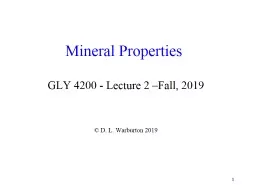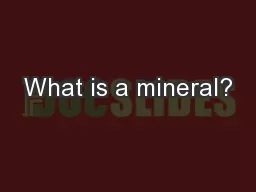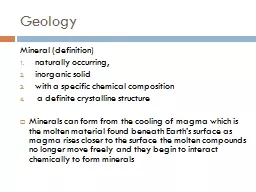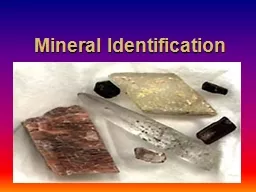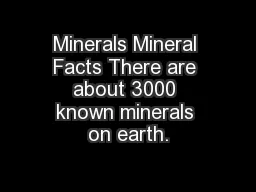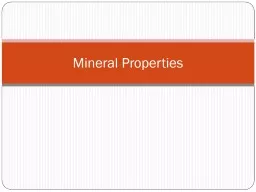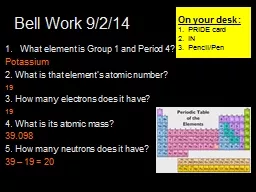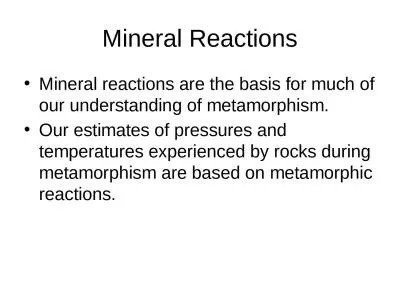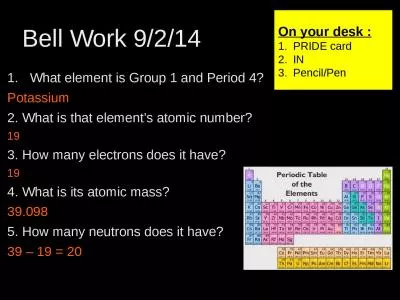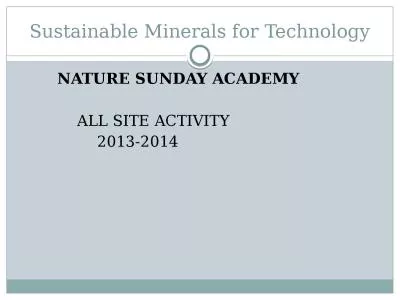PPT-1 Mineral Properties
Author : sherrill-nordquist | Published Date : 2019-12-19
1 Mineral Properties GLY 4200 Lecture 2 Fall 2019 D L Warburton 2019 2 Hardness Hardness may be measured in several ways Mohs scale developed by Austrian mineralogist
Presentation Embed Code
Download Presentation
Download Presentation The PPT/PDF document "1 Mineral Properties" is the property of its rightful owner. Permission is granted to download and print the materials on this website for personal, non-commercial use only, and to display it on your personal computer provided you do not modify the materials and that you retain all copyright notices contained in the materials. By downloading content from our website, you accept the terms of this agreement.
1 Mineral Properties: Transcript
Download Rules Of Document
"1 Mineral Properties"The content belongs to its owner. You may download and print it for personal use, without modification, and keep all copyright notices. By downloading, you agree to these terms.
Related Documents

